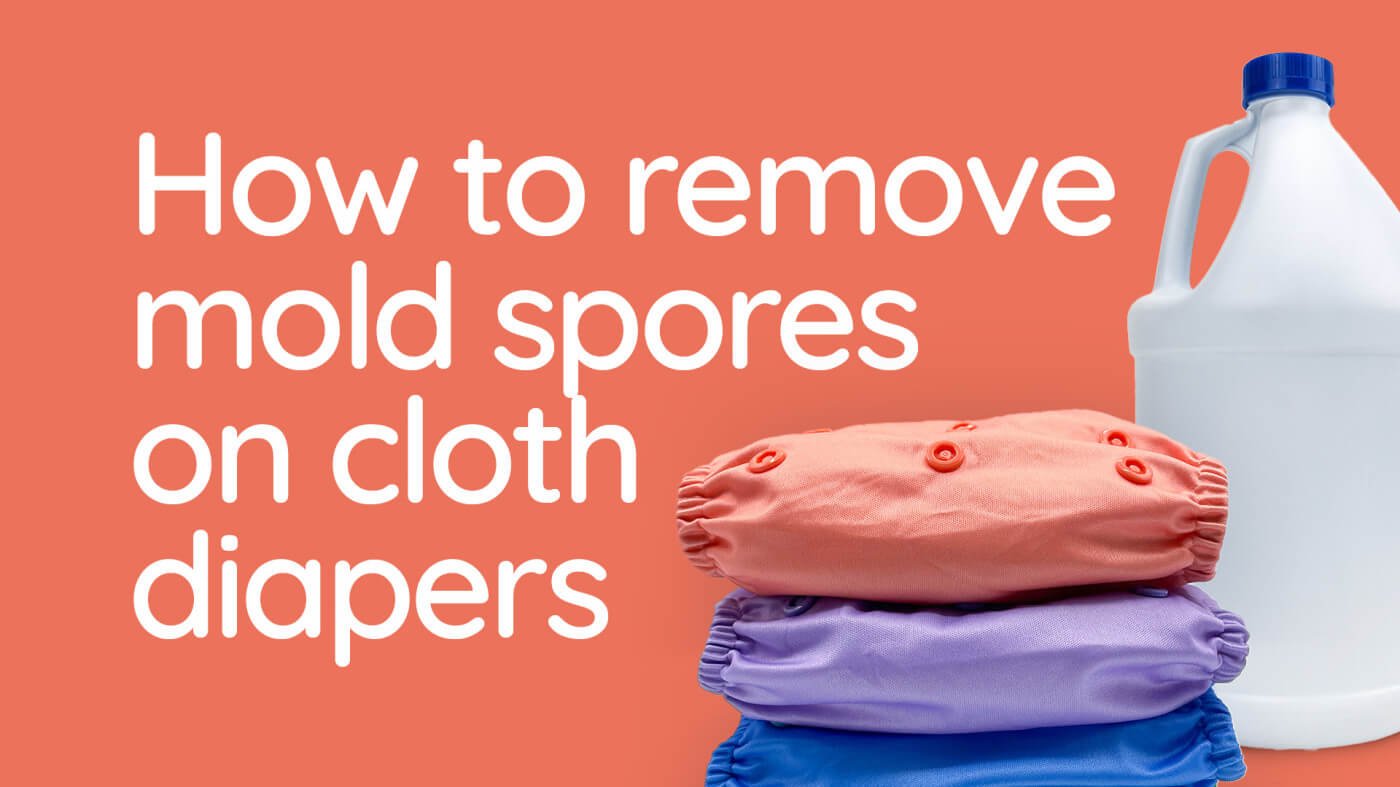When you begin to consider using or switching to cloth diapers for your baby or toddler, it can feel like information overload. Much like buying a new car, everyone has an opinion and it can be hard to sift through the noise.
While there's no one "right" way to cloth diaper your baby or toddler, there are some common mistakes to watch out for. Here are a few friendly do's and don’ts keep in mind as you navigate cloth diapering:
-
Microfiber — Microfiber is fast absorbing textile, which makes it a top choice for many reusable diaper brands. If you choose to use a diaper that contains microfiber absorbency, it is important to ensure that all microfiber layers are kept away from the baby's skin. When placed directly against the skin, microfiber can pull moisture away from the skin and lead to dryness and irritation.
Microfiber should not be confused with microfleece or microsuede which are both safe to put directly against your baby’s skin. Both microfleece and microsuede are common linings for all in one or pocket style diapers. -
Change diapers about every 2 hours — Cloth diapers need to be changed every 2 hours during the day. While many cloth diapers have the ability to add or remove absorbency to meet baby’s needs, cloth diapers are not as forgiving as disposable diapers and infrequent changes may lead to discomfort and leakage. It's important to be attentive to the baby's needs and change the cloth diapers regularly to ensure their comfort and avoid any potential issues such as leaks and diaper rashes.
-
Avoid fabric softeners and dryer sheets — Dryer sheets and fabric softeners should not be used with cloth diapers. Both fabric softeners and dryer sheets can leave a waxy residue on the fibers of reusable diapers, causing a build-up that can cause repelling or prevent absorption and lead to leaks.
Furthermore, these products can deteriorate the waterproof laminate layer on PUL covers, cause build-up on the washing machine and dryer, and coat all cloth diapering accessories with a layer that holds on to stink. Therefore, it's best to avoid using dryer sheets and fabric softeners with cloth diapers to maintain their absorbency and effectiveness.
Instead of dryer sheets, consider opting for reusable wool dryer balls. Wool dryer balls are eco conscious, cloth diaper safe and can even cut down on drying time. -
Avoid creams and ointments that contain petroleum and zinc oxide — It is important to choose a cloth diaper safe diaper cream that does not contain petroleum or zinc oxide to prevent staining and absorbency issues in modern reusable diapers. Petroleum-based creams can lead to absorbency issues and repelling when used on textiles, particularly synthetic fibers, such as microfiber.
On the other hand, zinc oxide, while creating a breathable barrier to shield the baby's skin, can cause staining on cloth diapers. Therefore, opting for diaper creams without these ingredients ensures the longevity and effectiveness of the cloth diapering routine, maintaining the absorbency of the diapers and preventing potential issues associated with these substances.
For a full list of cloth diaper safe diaper creams, check out this blog post » https://www.kinderclothdiapers.com/a/blog/cloth-diaper-safe-diaper-cream -
Simple wash routines reign supreme — We’re advocates for less is more when it comes to choosing your wash routine. You don’t need a fancy worksheet or measuring tape to choose a wash cycle.
The best place to start is with a simple pre-wash and heavy duty main-wash cycle. We’ve pulled together a lot of helpful cloth diaper washing information into one page. You can learn more here » https://www.kinderclothdiapers.com/pages/washing-cloth-diapers?_pos=1&_sid=90f06a2a6&_ss=r -
Avoid Stripping and Bleaching — Stripping and bleaching cloth diapers can be helpful when treating specific issues such as mineral build-up, ammonia, or bacterial contamination. However, these processes should not be part of your regular washing routine, as they can be harsh on the textiles and may damage the diapers over time.
Stripping, which involves deep-cleaning the diapers to address issues stemming from a poor wash routine, should be seen as a last resort and not a normal and expected part of cloth diaper care. Similarly, bleaching should only be used when dealing with serious staining and bacterial contamination, not as a regular maintenance practice. Both stripping and bleaching are intensive treatments that can deteriorate the fabric and reduce the lifespan of the diapers.
Looking for tips on how to Sanitize secondhand cloth diapers? » https://www.kinderclothdiapers.com/a/blog/sanitizing -
Don’t skip the pre-wash — At Kinder, we recommend two wash cycles when cleaning reusable cloth diapers. The first cycle, the pre-wash, is essential for removing excess soil, which allows the main wash to properly clean the diapers. The first, shorter cycle washes out the majority of the pee and poop, while the second longer cycle works on a deeper clean to ensure the diapers smell fresh and are thoroughly clean.
Pre-washing helps remove urine and bacteria, making the main wash more effective. By incorporating two wash cycles, you can ensure that the diapers are effectively and hygienically cleaned, contributing to a more successful cloth diapering experience.
For more tips on washing cloth diapers » https://www.kinderclothdiapers.com/pages/washing-cloth-diapers?_pos=1&_sid=90f06a2a6&_ss=r -
Find a support network — Having a good support network is crucial when choosing to use cloth diapers. It can provide valuable guidance, tips, and reassurance, especially for those new to cloth diapering. A supportive community can offer help with wash routines, fit tips, and general advice, making the cloth diapering experience more manageable and enjoyable.
We recommend joining the Discord group, Make Cloth Mainstream with Kinder, where you can find assistance with wash routines, fit tips and tricks, and general community support. This community can be a valuable resource, providing the help and encouragement needed to navigate the world of cloth diapering effectively and with confidence.
Join the discord now » https://discord.com/invite/93jtV5fcpA
Need more help? Use the website chat feature for one on one customer support from our team here at Kinder.





